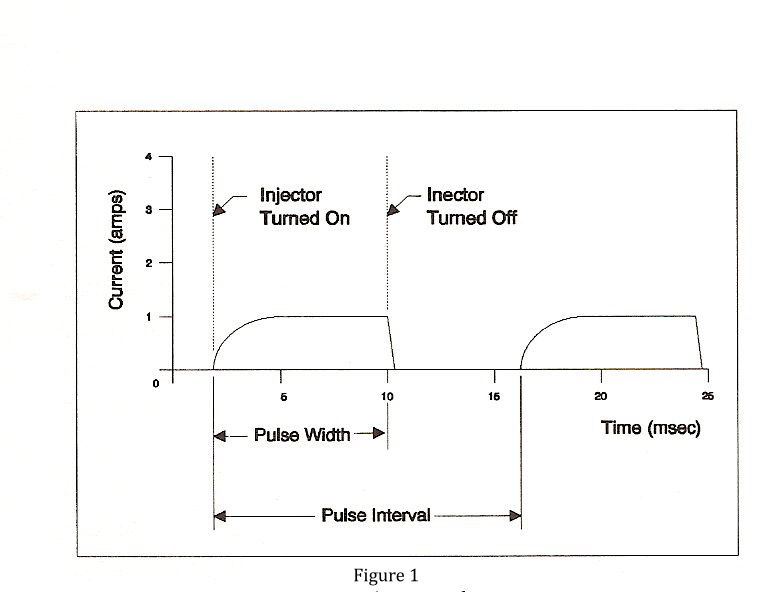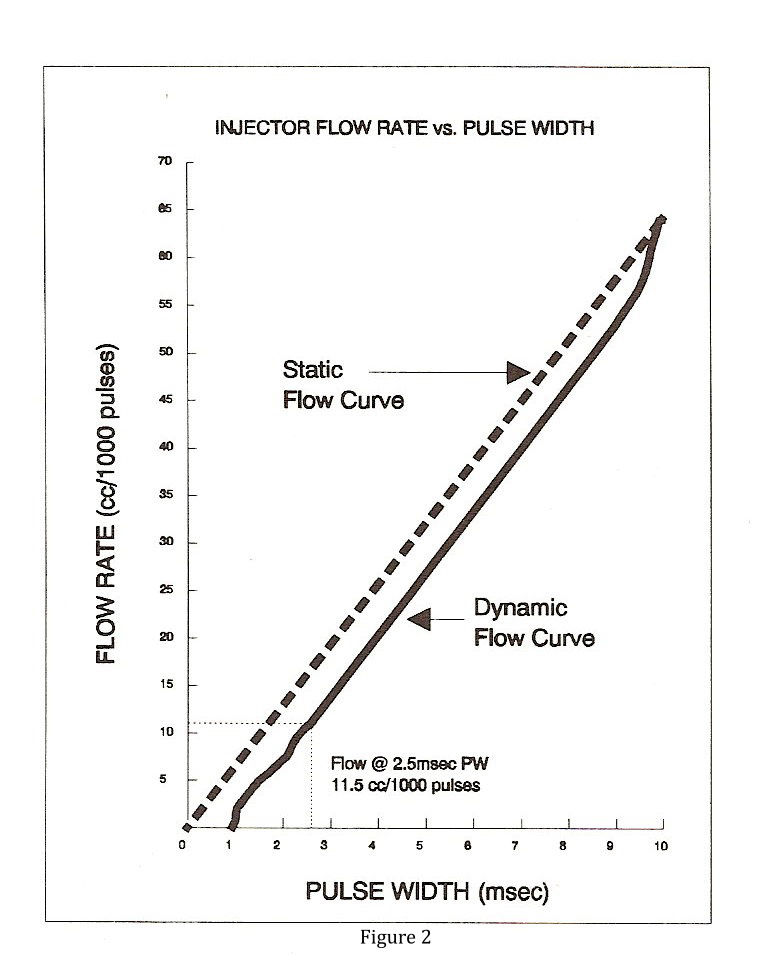Dynamic flow rate is sometimes expressed in duty cycles which are simply the percentage the injector is turned on during the period.
For example, if the PI is 20msec and PW is 5msec, then the duty cycle is 25%.
(5/20) x 100% = 25%.
Figure 2 shows a basic flow curve for an injector. This particular injector flows 11.5cc/1000 pulses at a PW of 2.5msec and 64.5cc/1000 pulses at a static flow. The static flow value was reduced from its normally measured value of 386.8cc/min to 1000 pulses at a 10msec PW and 10msec PI. This results in the injector being turned on for the duration of 1000 10msec PW’s. The dotted line that parallels the flow curve is the theoretical static flow curve which does not account for lost flow during the opening of the injector.



